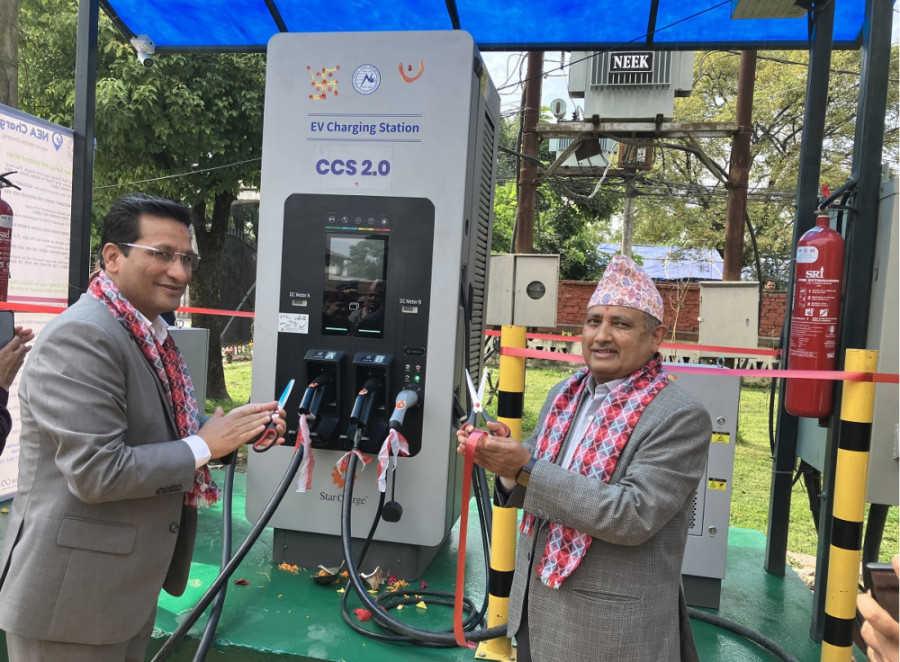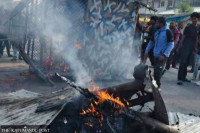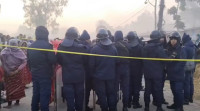National
Nepal has a long way to go to meet target on electric vehicles
Nepal Electricity Authority brings 51 charging stations into operation.
Prithvi Man Shrestha
Over 50 fast electric vehicle charging stations built by the Nepal Electricity Authority were inaugurated on Wednesday as the utility aims to increase domestic consumption of electricity.
With the NEA facing spillage of power in the rainy season, it wants to boost domestic energy consumption besides pushing for more export.
Minister for Energy, Water Resources and Irrigation Shakti Bahadur Basnet and Energy Secretary Dinesh Ghimire inaugurated 51 fast charging stations on Wednesday, the NEA said in a statement.
The power utility said the charging stations were built on major highways, at bus parks and in major cities of the seven provinces. Twenty-six of the charging stations are for charging big buses, micro buses, trucks, pickup vans and cars while the remaining 25 are for charging small and big cars. The NEA built these charging stations with financial support from the Asian Development Bank and technical assistance from the Norwegian government.
Moreover, the NEA has bigger plans for charging stations. “We want to set up an additional 500 charging stations,” said Kul Man Ghising, managing director at the NEA. “We aim to promote electric vehicles by building more charging stations.”
Besides the NEA, automobile dealers and other entrepreneurs have also been building charging stations across the country.
Yamuna Shrestha, managing director of Cimex Inc, dealer of the Chinese BYD electric vehicles, said that her company has already set up 30 fast charging stations and plans to add 17 more within the current fiscal year 2023-24.
According to her, there are around 150 charging stations across the country. She sees a growing demand for electric four-wheelers in the country. “Currently, a half of the total demand for four-wheelers is electric,” Shrestha, who is also vice-chair of the environment committee under the NADA Automobiles Association of Nepal, told the Post.
According to the Department of Customs, the country imported a total of 4,050 assembled electric vehicles in the fiscal year 2022-23 which is more than double the units imported in the previous year. The country had imported 1,807 electric four wheelers in 2021-22. Last fiscal year, 6,914 three wheelers were imported, according to the customs data.
According to the Nepal Automobile Dealers’ Association, EV sales started rising in the last two fiscal years following a dramatic rise in fossil fuel prices.
“In Nepal, the automobile growth is 15 percent annually, while the share of EVs is less than 1 percent,” said Uttam Babu Shrestha, an environmental specialist, at the ‘EV Dialogue 2023’ organised by Kantipur Media Group in May.
There are around 50,000 EVs, including electric rickshaws, currently in operation in the country, according to Shrestha. “We are far behind other countries in terms of EV use.”
Nepal has a long way to go to meet the electric vehicle target set by the second Nationally Determined Contribution (NDC) under the Paris Agreement for the period 2021-2030.
As per the NDC introduced in December 2020, sales of EVs in 2025 will be 25 percent of all private passenger vehicles sold, including two-wheelers and 20 percent of all four-wheeler public passenger vehicle sales. This public passenger target does not take into account e-rickshaws and electric-tempos in 2025, according to the NDC.
By 2030, there will be an increase in sales of EVs to cover 90 percent of all private passenger vehicle sales, including two-wheelers and 60 percent of all four-wheeler public passenger vehicle sales. The public passenger vehicle target does not include electric-rickshaws and electric-tempos.
Nepal made a commitment to achieve net-zero carbon emission by 2045 at the UN Framework Convention on Climate Change (COP26) in Glasgow in November 2021.
Stakeholders say more efforts are needed to promote electric vehicles to meet the target set by the NDC. “Demand for electric four wheelers for private use has been growing rapidly,” Shrestha of Cimex Inc told the Post. “The demand will continue to grow further for electric vehicles in the upcoming years.”
The demand for electric vehicles for public transport has not grown as expected. “The government should make efforts to promote e-vehicles in public transport,” Shrestha added.
Along with rising demand for electric vehicles in the country, the government had also adopted the policy of increasing the installation of charging stations. More charging stations will be built, and private sector financing will be facilitated to promote the use of electric vehicles, states the budget for the current fiscal year.
At present, a private-sector investor needs the NEA’s approval to establish a charging station because the utility has to install electric metres to calculate electricity consumption.
NEA officials say they have the policy of facilitating the private sector to set up more charging stations. “The private sector must be mobilised to increase the penetration of charging stations in the country as the government has its own limitations,” Shrestha of Cimex Inc said.




 12.12°C Kathmandu
12.12°C Kathmandu













%20(1).jpg&w=300&height=200)

